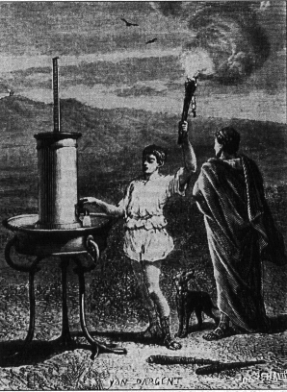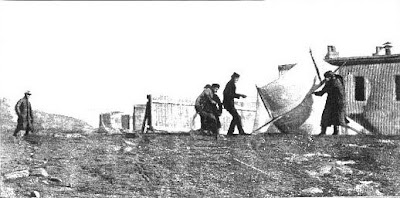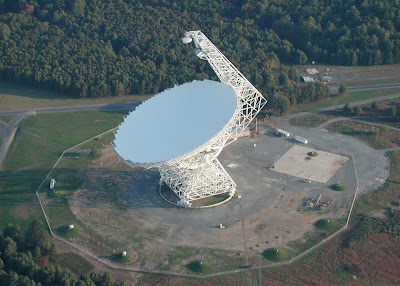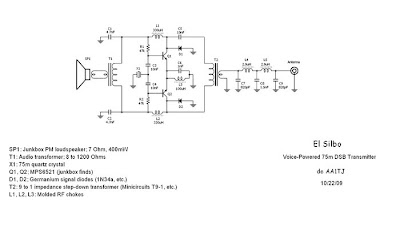
Dave in Ireland alerted me to some interesting radio content in the John LeCarre spy novel "The Looking Glass War." (I think presenting this excerpt is allowable under "fair use.") Dave reports that the radio they are working on is the one pictured above. It is a British B2, SOE Type 3. The instructor obviously has the Knack, but the student seems a bit shaky.
----- The Looking Glass War: -----
(Fred Leiser is the agent, Johnson is the radio expert who is also mentioned to be Ham op)
'You know the set then?' Johnson asked.
'The B2.'
'OK. Official title, Type three, Mark two: runs on AC or a six-volt car battery, but you'll be using the mains, right? They've queried the current where you're going and it's AC. Your mains consumption with this set is fifty-seven watts on transmit and twenty-five on receive. So if you do end up somewhere and they've only got DC, you're going to have to borrow a battery, right?'
Leiser did not laugh.
'Your mains lead is provided with adaptors for all continental sockets.'
'I know.'
Leiser watched Johnson prepare the set for operation. First he linked the transmitter and receiver to the power pack by means of six-pin plugs, adjusting the twin claws on the terminals; having plugged in the set and turned it on, he joined the miniature Morse key to the transmitter and the earphones to the receiver.
'That's a smaller key than we had in the war,' Leiser objected. 'I tried it last night. My fingers kept slipping.'
Johnson shook his head.
'Sorry, Fred; same size.' He winked. 'Perhaps your finger's grown.'
'All right, come on.'
Now he extracted from the spares box, a coil of multi-stranded wire, plastic covered, attaching one end to the aerial terminals. 'Most of your crystals will be around the three megacycle mark, so you may not have to change your coil - get a nice stretch on your aerial and you'll be a hundred per cent Fred; specially at night. Now watch the tuning. You've connected up your aerial, earth, key headphones and power pack. Look at your signal plan and see what frequency you're on; dish out the corresponding crystal, right?' He held up a small capsule of black Bakelite, guided the pins into the double socket - 'Shoving the male ends into the doodahs, like so. All right so far, Fred? Not hurrying you, am I?'
'I'm watching. Don't keep asking.'
'Now turn the crystal selector dial to "fundamental all crystals", and adjust your wave band to match your frequency. If you're on three and a half megs you want the wave-band knob on three to four, like so. Now insert your plug-in coil either way round, Fred; you've got a nice overlap there.'
Leiser's head was supported in his hand as he tried desperately to remember the sequence of movements which once had come so naturally to him. Johnson proceeded with the method of a man born to his trade. His voice was soft and easy, very patient, his hands moving instinctively from one dial to another with perfect familiarity. All the time the monologue continued:
'TRS switch on T for tune'; put your anode tuning and aerial matching on ten; now you can switch on your power pack, right?' he pointed to the meter window. 'You should get the three hundred reading, nearly enough, Fred. Now I'm ready to have a go: I shove my meter selector on three and twiddle the PA tuning till I get maximum meter reading; now I put her on six ----'
'What's PA?'
'Power Amplifier, Fred: didn't you know that?'
'Go on.'
'Now I move the anode tuning knob till I get my minimum value - here you are! She's a hundred with the knob on two, right? Now push your TRS over to S - S for send, Fred - and you're ready to tune the aerial. Here - press the key. That's right, see? You get a bigger reading because you're putting power into the aerial, follow it?'
Silently he performed the brief ritual of tuning the aerial until the meter obediently dipped to the final reading.
'And Bob's your uncle!' he declared triumphantly.
'Now it's Fred's turn...'















































.jpg)








